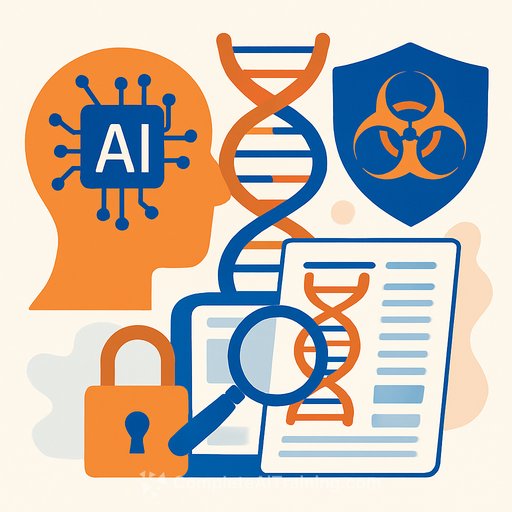AI in Biology: Breakthroughs, Risks, and the Case for Stronger Biosecurity
AI is accelerating drug discovery, protein engineering, and DNA design. That same capability can be misused to create harmful sequences that slip past existing safeguards.
A recent study published in Science showed that AI-generated sequences can evade DNA manufacturer screening in certain scenarios. The message is clear: progress brings new attack surfaces, and risk mitigation must keep pace.
How Biosafety Screening Works-And Where It Falls Short
Most DNA providers screen orders using biosafety software that compares sequences against databases of known threats. This helps flag obvious risks, but it doesn't catch what isn't already cataloged.
After stress tests exposed gaps, developers updated databases and refined screening rules. Detection improved, yet partial blind spots remain-some risky sequences may still pass.
Why This Matters for Research and Clinical Teams
- Procurement risk: Screening gaps can let dangerous constructs move downstream.
- Model misuse: General-purpose design tools can be repurposed for harmful goals.
- Compliance exposure: Regulations are tightening; audits will expect controls beyond basic screening.
- Reputation and funding: A single incident can stall programs and erode trust.
- Supply chain fragility: Vendors vary widely in safeguards, logging, and update cadence.
What Stronger Safeguards Look Like
- Universal screening standards across providers, including k-mer and function-based checks, not only database matches.
- Risk-tiering for orders (benign, elevated, high-risk) with escalation paths and human review.
- Independent red-teaming and continuous evaluation of screening systems and AI models.
- Model governance: pre-deployment testing, safety filters, and restricted access to high-risk capabilities.
- Secure compute, audit logs, and traceability from design to delivery.
- Clear incident response playbooks and rapid disclosure channels across organizations.
- Workforce training focused on dual-use awareness and safe tool operation.
- Cross-sector collaboration to share indicators of risk and update norms quickly.
Policy and Oversight Priorities
- International norms for DNA screening and AI model safety, with aligned definitions of prohibited content.
- Funding for biosafety research and standardized evaluations that stress-test real systems.
- Independent audits and transparent reporting on screening effectiveness and false-negative rates.
- Liability safe harbors to encourage timely reporting and data sharing on emerging threats.
- Proportionate controls on distribution of high-risk biological design capabilities.
Practical Steps You Can Take Now
- Vet vendors: Ask about screening coverage, update cadence, human-in-the-loop review, and audit outcomes.
- Adopt internal model-use policies that restrict high-risk biological design features to approved users and contexts.
- Implement access controls, code/data review, and provenance tracking for sequence design workflows.
- Run tabletop exercises with legal, safety, and leadership to test escalation and reporting.
- Join or monitor industry groups that publish screening updates and best practices.
- Train teams on dual-use risk and reporting channels; make it part of onboarding.
The takeaway: AI is accelerating useful biology, but security must be designed into tools, vendor choices, and policy from the start. Stronger standards, independent oversight, and accountability will reduce the margin for misuse without stalling legitimate research.
Further reading:
- Science journal for peer-reviewed research on AI-enabled protein design and biosecurity.
- International Gene Synthesis Consortium (IGSC) for DNA screening practices and provider commitments.
If your lab or team is adopting AI, consider structured training on responsible workflows and governance: AI courses by job function.
Your membership also unlocks:






